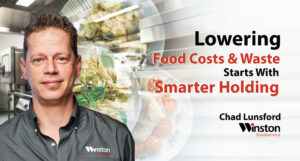Chef Sam constantly looks for new uses for CVap® ovens. Recently, she used them to prepare fresh ricotta cheese. Naturally, the results were da’ bomb. The old Monty Python adage is true; blessed are the cheesemakers.

A Cheesy History
Ricotta is ancient. That is to say, there’s evidence of its production on the Italian peninsula during the Bronze Age. In fact, it’s the oldest of the whey cheeses. Whey is a byproduct of other cheese production. To put it another way, it’s a classic example of using a waste product to create something valuable. Historically, ricotta was made with sheep, cow, or buffalo milk. Currently, most ricotta is made from cow’s milk.
Ricotta literally means recooked (from the Italian “ricocotto”). Accordingly, it’s made by coagulating the milk proteins that remain after casein has been depleted by making other cheeses. In contrast to many aged cheeses, ricotta is often served fresh. Naturally, ricotta’s perishable nature makes it a delicacy to enjoy quickly.



Traditional ricotta involves allowing whey to sit at room temperature to ferment and acidify. Next, the whey is heated to near-boiling. Consequently, the low pH and high temperatures denature the protein and cause it to flocculate, forming curds. In contrast, Chef Sam bypassed room-temp fermentation. Instead, she used chemistry and CVap technology.
Settings
Vapor Temp – Cook 200°F
Air Temp – Cook 350°F
Ricotta Recipe
Per Hotel Pan
- 1 Gallon whole milk
- Pinch salt
- 2/3 Cup lemon juice or distilled vinegar (or 1 tsp citric acid)
The Process
- Preheat oven.
- Pour milk into hotel pans.
- Place in oven.
- Remove from oven when milk reaches 200°F.
- Add salt and acid (lemon juice, distilled vinegar, or citric acid).
- Gently stir together and allow to rest for five to ten minutes. Allow the acid to work and create clumpy curds.
- Using a fine mesh strainer and cheesecloth, strain out the curds, leaving the liquid whey behind.
- Allow to drain for ten minutes to an hour, depending on desired consistency of finished product.
- Transfer finished ricotta to container and refrigerate.
Ricotta has a delicate, slightly sweet flavor. Naturally, this makes it perfect for cheesecake, cannoli, manicotti, and other Italian dishes. Or enjoy it plain, by the forkful. In the end, it’s sinfully good.










